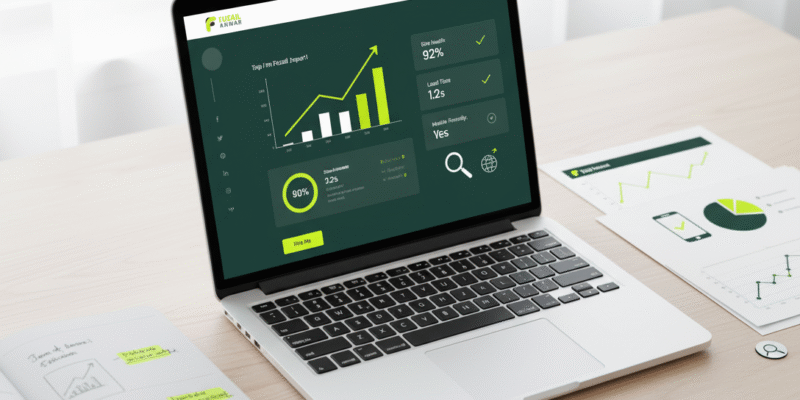Most small business websites never rank, not because their content is bad or their backlinks are missing, but because their technical SEO is silently holding them back.
I’ve audited dozens of small business sites (from local services to eCommerce stores), and in most cases, the problems are surprisingly basic. The good news? They’re fixable and fast.
Common Mobile-Usability Issues (and How to Fix Them)
Here’s the reality: Google’s index is mobile-first, yet most small businesses still treat mobile optimization as optional.
When I audited a local website in the UK, the mobile version was a disaster, text overlapping images, clickable elements too close, slow image load.
Within 7 days, I made these quick changes:
• Used a responsive theme with flexible image sizes.
• Added viewport meta tags to scale the layout correctly.
• Reduced large hero images and enabled lazy loading.
• Increased button padding and spacing between links.
After re-indexing, their mobile usability score jumped from 58 to 95, and their local rankings improved from page 3 to page 1 for two target keywords.
Speed Optimization for WordPress (Low Cost, High Impact)
I’ve worked with several small WordPress sites, especially in Australia, where hosting quality is often overlooked to save cost.
One client, a small accounting firm had a website taking 8.6 seconds to load. Their bounce rate was 87%.
I fixed it by:
• Switched from shared hosting to dedicated hosting.
• Installed WP Rocket for caching & preloading.
• Compressed all images.
• Deactivated 6 unnecessary plugins.
Result?
Load time dropped to 2.1 seconds
Bounce rate fell to 42%
Traffic up by 35% in 4 weeks
These are not “nice to have” changes but they directly influence Core Web Vitals, which are ranking factors.
Fixing Crawl Errors & Structuring Sitemaps (E-commerce Case)
Technical SEO issues hit e-commerce sites even harder, especially those with hundreds of product URLs.
A Canadian e-commerce client came to me with this issue:
“Google Search Console keeps saying ‘Crawled – currently not indexed’ for 100+ URLs.”
Here’s what I found:
- Their XML sitemap had dead product URLs.
- Canonical tags were missing on variant pages.
- Pagination wasn’t properly linked.
Fix:
- Cleaned the sitemap, leaving only indexable URLs.
- Implemented canonical tags on product variations.
- Used breadcrumbs for internal linking consistency.
- Resubmitted sitemap to Google Search Console.
Within 2 weeks, 53% of previously ignored pages got indexed, and their impressions doubled in Search Console.
How to Run Your Own Mini Technical SEO Audit (Without Expensive Tools)
You don’t need to pay $300/month for tools just to find technical issues.
Here’s a quick audit checklist you can use:
| Check | Free Tool | What to Look For |
| Mobile Usability | Google Search Console | “Text too small”, “Elements too close” |
| Speed | PageSpeed Insights / GTmetrix | LCP under 2.5s, CLS under 0.1 |
| Crawlability | Screaming Frog (Free up to 500 URLs) | Broken links, redirects |
| Sitemap | XML Sitemap Validator | Only indexable pages |
| Core Web Vitals | Chrome Lighthouse | Accessibility & performance |
If you fix even half of what you find here, your site can jump a few ranking positions without a single backlink.
Technical SEO isn’t glamorous, there’s no viral post, no big reveal but it’s the foundation of every successful site.
If your small business website is struggling to rank, don’t start with backlinks or new content but start with your site’s health.
Clean up the crawl errors, improve mobile usability, and get that site speed under 3 seconds.
Once Google can crawl, understand and load your website properly that’s when your content and backlinks finally start working.
By Fuzail Anwar
SEO Expert | Helping businesses worldwide
If you need help Lets Connect




